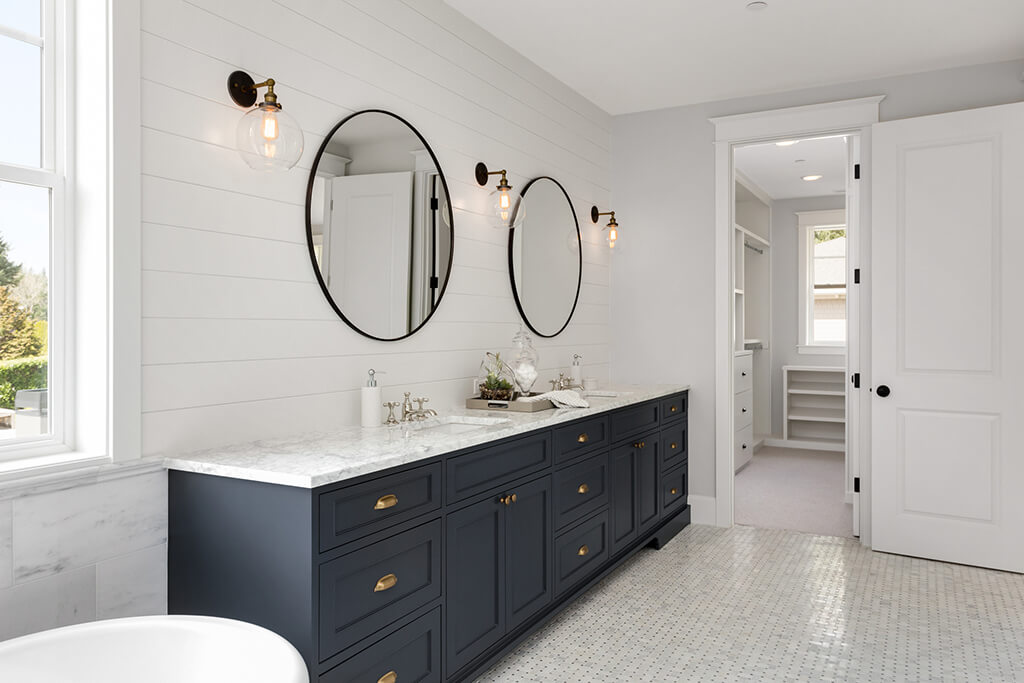Lighting is one of the most important factors to consider when designing a space because it affects the entire mood of a room. In addition to altering the mood of the occupants in a room, lighting can affect its shape and size. Each room in your home serves a different purpose and the lighting you choose should reflect that. There are four different types of lighting that you should consider: 1. Ambient – soft lighting that creates an ambient glow; 2. general – mainly overhead lighting, or can be a combination of all sources; 3. task/directional – lighting in a particular area where a job is performed; 4. accent – adding drama to a space for decorative purposes. Here’s a breakdown of how to light each room in your home:
Kitchen:

Cooking is a duty that requires bright lighting because you are using sharp tools that can potentially harm you. So, a kitchen needs task/directional lighting so you can see what you’re doing, combined with other types of lighting such as ambient for overall lighting. For overall lighting, choose a ceiling fixture that will easily distribute light around the entire kitchen area. Then, install task lighting sources directly above the work spaces. A popular kitchen lighting option is pendants over an island. These should hang about 35-40 inches above your surface. Another great way to provide task lighting is to use under-cabinet lighting. As with pendant lighting, these lights direct right down onto your workspace.
Living Room:
You most likely spend a lot of time in your living room. Whether it be a night of entertaining, or just a cozy movie night, you’ll want lighting that can serve multiple purposes. To create a movie-theatre feel, dimmable sconces, track lights and indirect lighting allow for soft lighting without distracting the TV screen/creating a glare. When the TV is off, table lamps or an overhead ceiling fan light is perfect.
Dining Room:
Your dining room is where conversation and socializing occurs, so good overall lighting is essential. A chandelier can be both decorative and functional while making a statement. However, a chandelier alone often does not light up your home adequately. Recessed or track lighting is a good choice for most dining rooms and can nicely bring focus to any art work in the space.
Note: If you do decide to hang a chandelier, it should hang about 33 inches above the table in a dining room with 8 foot ceilings. For every foot above 8 feet, add 3 inches.
Bathroom Lighting:

Your bathroom is where you start and end your day, so the best lighting helps create a place to relax and recharge. A good lighting plan is bright lighting and a series of layers. Use task lighting in areas where you shower, shave or put on makeup, while letting general lighting enhance the overall mood of the space. The biggest mistake you can make when lighting your bathroom is putting lights directly above the mirror. This casts shadows on your face, making it more difficult to shave, apply makeup, etc.
Hallway Lighting:
Hallways are the least of your concerns when it comes to lighting your home because you don’t typically need bright lighting. However, experts recommend you attach a few sconces on the wall for indirect lighting or choose a flush-mount ceiling fixture, such as a can light, for unobtrusive light.
Lighting is important because it is one of the key elements that makes your house a home. The proper lighting allows you to enjoy your home at its full potential so be sure to give it thoughtful consideration!
Brought to you by Tara Schumann, Social Media/Marketing Manager for TJC Real Estate and Management Services.
TJC Real Estate & Management Services • 303.324.6988 • info@tjcrealestate.com
Your Neighborhood Realtors® Since 2005
© 2021
© 2024 TJC Real Estate. All rights reserved. Privacy Policy | Terms of Use | Website by Distill